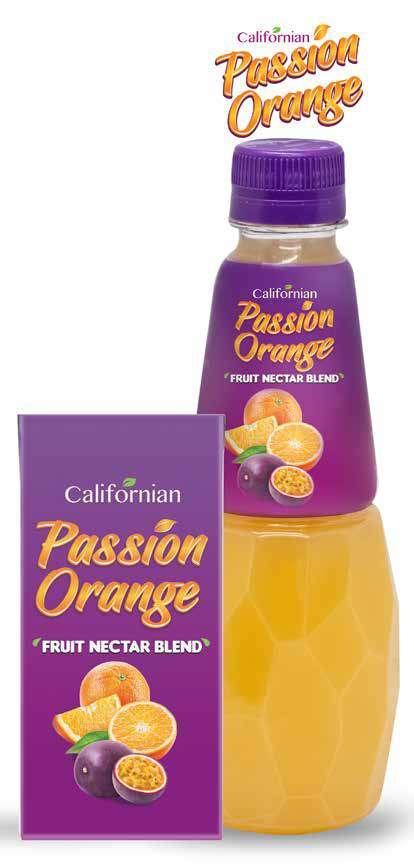
9 minute read
Magnesium the forgotten crop nutrient
Figure 1: Magnesium deficiency in Common beans.

Advertisement

MAGNESIUM THE FORGOTTEN CROP NUTRIENT
BY PHERGUSON MITI
Fig 2: Nutrient availability and pH table.
1). nesium and the plant will show deficiency This article will highlight the importance of Magnesium in crops and the dangers of a late response to control Magnesium deficiency. symptoms even when Magnesium is in the soil or after application of a Magnesium rich fertiliser. Therefore, the farmer should ensure the soil pH is within the adequate soil pH range of 5.5-6.5 if Magnesium is to Magnesium is a high component of be available for uptake by the plants. plant chlorophyll and it plays a huge role in the movement of Photoassimilants (Sucrose or plant food), activation of plant enzymes, root formation, movement of sugars (Plant food) from the production Magnesium also leaches easily in acidic soils therefore farmers should also ensure that the pH is within the recommended range. organs(Leaves) to the sink (fruit/Tubers), Therefore, farmers should invest in soil Photosynthesis, formation and utilization testing and applying recommended rates of Adenosine Triphosphate (ATP) which is of lime to maintain the soil pH. the energy source of the plant. The pH table below shows the decrease Therefore, the growths of plants, in magnesium availability below pH of 5.5 especially sink organs (roots and Seed and above 8.5. M agnesium is one of the Secondary Macronutrients required by plants, others being Calcium and Sulphur. However, Magnesium has being forgotten and it is really included in fertilisers and is also not applied as a foliar nutrient to most crops. Farmers will only react to the magnesium deficiency once they see the symptoms on the leaves, the majority of farmers will not even notice it, while others might mistake it for diseases and formation) are significantly affected by low supply of Magnesium in the soil. The following crops require adequate supply of Magnesium and if farmers are to optimise the yield potential of the crops, they have to ensure that they supply sufficient quantities of Magnesium throughout the growth of the crops. •The root/Tuber crops: such as Potatoes, Beetroots, carrots, cassava and onions. •Seed crops/oil seeds: Sunflower, Soya beans, groundnuts, Rice, Cotton, Wheat, maize and Sorghum. •Using Magnesium to treat Aluminium toxic soils. High concentration of Aluminium in the soil leads to Aluminium toxic. This occurs when Aluminium becomes more soluble in the soil at pH below 4.8. The toxic levels of Aluminium in the soil solution affect plant root cell division and the ability of the roots to elongate. The root tips become brittle and root growth and branching is reduced thereby preventing uptake of nutrients and water. This leads to stunted growth and loss of yield. they will end up spraying fungicides and bacterial control. The typical Magnesium deficiency symptoms are the Leaf yellowing in the form of interveinal chlorosis on older leaves (Figure However, the soil availability and uptake of Magnesium by plants is affected by; •Low soil pH. In acidic soils plants fail to take up MagAluminium and magnesium ions compete for binding sites on the cell membranes of the plant, therefore, in aluminium toxic soils magnesium absorption is inhibited.

However, Aluminium toxicity can be alleviated by high magnesium application. The high concentration of the Magnesium ions saturates the binding sites on the root cell plasma membrane surfaces thereby reducing the effects of the Aluminium ions. Figure 3, above shows the effect of Aluminium toxicity on root development.
Hence the application of Dolomitic Lime to Aluminium toxic soils is very important and will give immediate results.
•Low soil organic matter in soil.
Organic matter plays a significant role in reducing magnesium leaching from the soil profile. This is because organic matter has a negative charge and magnesium has a positive charge. Therefore, the Magnesium binds to the organic matter in the soil, and reduces leaching. A low organic matter soil allows excess leaching and this reduces Magnesium availability to the plant because the magnesium is carried deeper in the soil and below the plant root zone.
•Low Cation Exchange Capacity (CEC) in the soil.
CEC is the ability of the soil to hold the nutrients within the soil root profile. If the CEC is low the nutrients are easily leached from the soil and this reduces plant uptake. Sandy soils have very low CEC hence the high level of nutrient leaching. On the other end clay soils have a high CEC and will hold nutrients within the soil profile. However, a very high CEC means the crops will require a lot of energy to absorb the nutrients from the soil.
•High level of Potassium, Calcium, Sodium, Manganese and Ammonia in
the soil or excess application of fertilisers containing these nutrients will lead Fig 3: Barley seedling at Aluminium concentrations of 15ppm and less than 2ppm.
Fig 4: Mulders Chart. to Magnesium deficiency because these nutrients compete with Magnesium uptake by plants.
Increased application of Potassium, Calcium Sodium, manganese and Ammonia will affect the uptake of Magnesium by the plant and the plant might end up showing magnesium deficiency. On the other hand an excess application of Magnesium will also affect the uptake of Calcium and Potassium. The increase in Phosphorus and Nitrate Nitrogen will also increase the uptake of Magnesium.
The nutrient interactions can best be explained by Mulder’s Chart below (Figure 4). Mulder’s Chart shows how elements interact. The dotted lines show which elements enhance each other and the solid lines show which elements antagonize each other. For example, calcium can cause a magnesium deficiency, while nitrogen can solve this deficiency. Aluminium and magnesium ions compete for binding sites on the cell membranes of the plant, therefore, in aluminium toxic soils magnesium absorption is




inhibited.
•Low temperature. Magnesium uptake by plants is driven by two processes that are the transpiration stream and diffusion. The higher the temperatures the higher the transpiration stream and vice versa. Therefore, during periods of low temperature the transpiration pull is low and less Magnesium is taken up by plants. •Dry soil conditions. Magnesium moves in the soil by a process called diffusion. This is a process were the Magnesium ions move from the zone of high concentration (Surrounding soils) to the zone of low concentration (Root zone). Water is the medium which moves the magnesium from the high concentrate zones to the low concentrate zone. Therefore, dry soil prevents this movement from taking place.
The three important plant growth systems which require magnesium are;
1.Fixing of carbon dioxide (CO2) into Organic Carbon (C) through photosynthesis. 2.Translocation of the assimilated organic carbon (Food) from source to sink. 3.Utilization of assimilated organic carbon (C) in the Sink organs for growth.
Therefore, the deficiency of Magnesium during the growth process affects both plant growth and the yield.
Several researches have been done to show the importance of magnesium and its effects on yield. Of importance are the two research studies by Cakmak in common beans and Herman in Sugar beet.
Hermans grew sugar beets with either a low or an adequate Mg supply and analyzed, 1) Plant growth, 2) Photosynthetic CO2 fixation, 3) Chlorophyll concentrations, 4) Photosynthetic electron transport and 5) Leaf concentration of sucrose. The results obtained were clear: before any noticeable or significant change occurred in the first four measurements, there was a large accumulation of sucrose in the fully expanded leaves of the Mg-deficient plants. Magnesium-deficient leaves accumulated up to 4-fold more sucrose when compared to the Mg-adequate leaves, indicating a severe inhibition in sucrose transport out of the Mg-deficient leaves. Cakmak studied the role of Mg nutrition in; 1) Shoot and root growth, 2) Concentration and distribution of carbo hydrates among root and shoot organs, and 3) Phloem export of sucrose in bean plants.
Results showed pronounced inhibition of root growth before any noticeable change in shoot growth and chlorophyll concentration. Consequently, the shoot: root ratio for both bean and wheat plants increased in Mg-deficient plants (Figure 5). This early negative effect of Mg deficiency on root growth before the development of visible leaf chlorosis is a critical issue for growers because of the importance of a good root system for plant production. Therefore, special attention should be given to the Mg nutritional status of plants before the development of any visible deficiency symptoms. Accumulation of carbohydrates in fully-expanded leaves is a common phenomenon with Mg
Other roles of Magnesium
Similarly, adequate Mg nutrition is also of particular importance for grazing animals, since a low Mg supply in soils may induce grass tetany, a potentially fatal metabolic disorder in animals associated with low levels of Magnesium in the blood. Magnesium also has a particular protective role against cardiovascular diseases, strokes and diabetes, Mg concentration in food crops and daily diet is also becoming an important world-wide issue in food quality and human nutrition.
Magnesium protects plants against Aluminium toxicity: Magnesium is important in alleviating Al-toxicity in acidic soils by releasing an organic acid anion from the roots which chalates the toxic Al ions and form Al-organic acid complexes that are no longer phytotoxic.
Recommendations
•To prevent Magnesium deficiency and to ensure high yields farmers should apply balanced fertiliser of Potassium (K), Calcium (Ca), Ammonia (N) and Magnesium (Mg) because excess of K, Ca and N will affect Mg availability. The recommended soil ratios are Mg: Ca 3-6.5, Mg: K 2-4 and Ca+Mg: K 8:30 any ratios below or above these shows imbalance in the soil and will


Figure 5: Growth of Common beans on the left and wheat on the right. result in nutrient deficiencies.
Imbalances are very predominant in crops which require high level of Potassium, Nitrogen and Calcium such as Tomatoes, Potatoes and cucumbers. •Apply dolomitic lime to acidic soil with low Magnesium and high Aluminium concentration levels above 2ppm. Farmers should also control their soil pH by liming and maintaining the soil pH range of between 5.5 and 6.5. •Apply Organic matter in Sandy soils and low Organic matter soils. Organic matter should always be applied to improve the CEC of the soil and to reduce Magnesium leaching. •Apply follow up foliar sprays of Magnesium before and after flowering, Fruit/Tuber development and or during expansion to maximise yields.
PAWAN AUTO WHEELS Sales, Service, Spare Parts, Training, 10 years spare parts backup
Address Tell +26-0961919098 / 0964500755 / 0968 782948 Spare Parts: +26-0761955717

HEAD OFFICE Plot No-1 Manali Road Jesmondine Lusaka Zambia Website: www.bajajzambia.com Email: info@pawanglobal.com

BAJAJ 3 Wheeler
Boxer 150 CC







